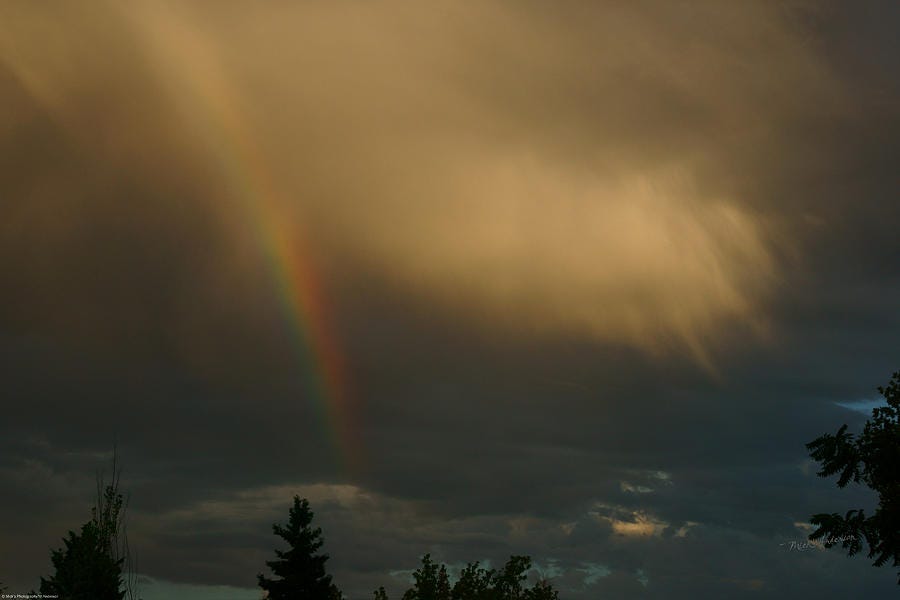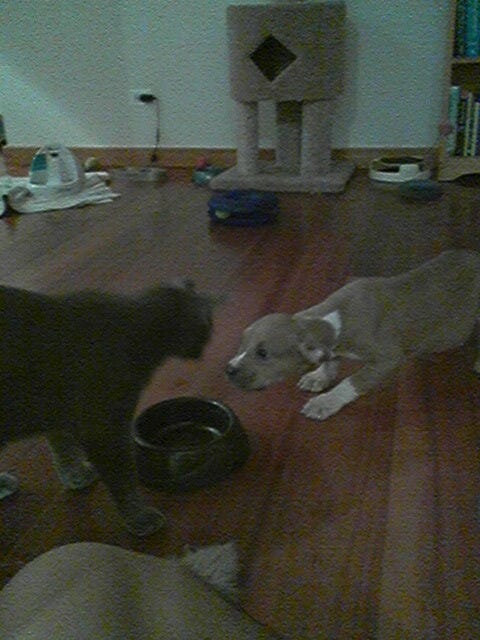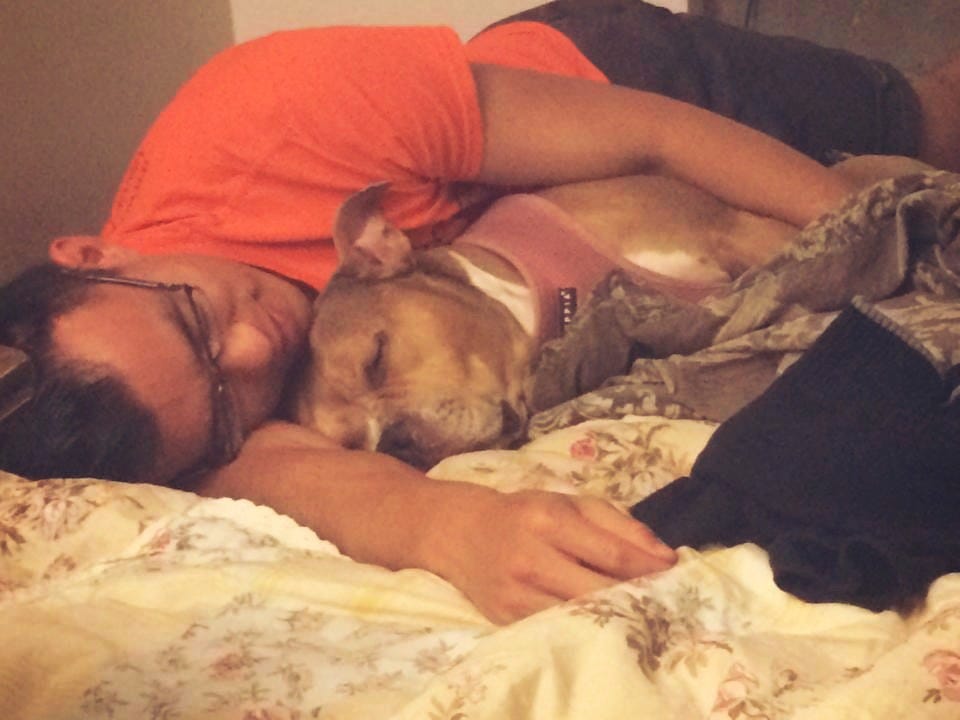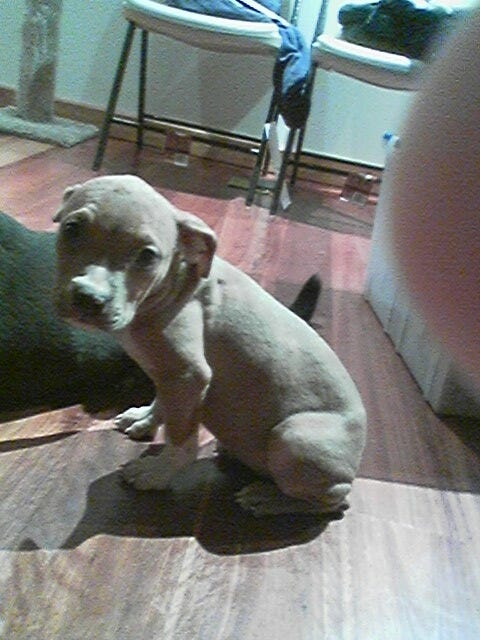Lessons on love. From a killer.
She was born from violence. Only one thing could save her.
My best friend was born to kill. It was not her choice, and perhaps not her fault. But she has a history of violence that would make a serial killer squirm.
There was the time she ripped open someone’s head and left their ear hanging from a string of skin. Or the time that she grabbed her victim’s throat so tightly that the screams went silent. It was like someone hit the mute button on a horror movie.
But perhaps the worst incident occurred in my own home. I came back to my apartment one day to blood on the kitchen floor. I heard whimpering from the bedroom.
“What hell is going on!”
I rushed in and saw my best friend’s sister on the ground, with her face sliced half open. I rushed her to the hospital where her cheek was surgically rebuilt. The perpetrator showed no remorse for the attack.
You might be wondering why I am friends with someone like this. The easiest answer is that my best friend is a dog — to be precise, an American Staffordshire Terrier rescued from a dog fighting circle — and so are her victims.
But the easiest answer is often not the best one. And here is the right answer: Lisa is my best friend because she taught me what it means to love.
—
I’m writing this now, with tears in my eyes, because Lisa’s journey has come to an end. Fourteen years after she came into my life, from an industry so sadistic that it can only operate in the dark1, she collapsed on a walk on Wednesday evening and stopped breathing. Her co-parent Priya was walking with her when it happened. Priya called me, crying, and said that something terrible had happened. When I arrived at the hospital, just 20 minutes after the call, it was already too late. The doctor came out to tell us that her little heart had given out. I didn’t get to say good bye.
But what I cannot say to her, I will say for her. I have written about Lisa’s past before — and a terrible mistake I made that nearly cost Lisa her ability to walk — but there were some key parts of Lisa’s life that I have not shared publicly. Now is the time to do that, not just to honor Lisa’s memory, but because there are lessons in those stories that the world needs to hear.
—
When I adopted Lisa, I did not expect her to be a killer. She was just a puppy, and I believed the rescue mantra: There are no bad dogs, just bad owners. I knew the circumstances from which Lisa was taken — a Chicago dog fighting circle — were cruel and violent. The scars on her face and body, at the age of just 3 months, were evidence of that. But she was the most timid of the puppies in her litter, and when I brought her to my apartment, she was scared of even my cats. With a responsible guardian, I thought, she would overcome her past.
“No one will ever hurt you again,” I promised. “Everybody loves you.”
The first weeks went well. Lisa would bounce around like a bowling ball, knocking my 3 cats and my other dog into each other. But she never got angry when her new family members hissed, scratched, or growled. She would chomp her food so energetically, with a vertical head-jerking motion that sent a smelly brown mixture of food, saliva, and who-knows-what-else flying everywhere. But while she would take everyone else’s food (and sometimes the cat’s feces), she never seemed to mind if others took hers. Slowly, all my furry kids developed not just tolerance but friendship.
But the most remarkable thing was her desire to be with me. Lisa had no business being attached to a human being. She was raised in a cage by a man who wanted her to fight to the death. And yet from the very first night in my home, her fear was overcome by something even more powerful: love.
Lisa never knew a kind touch from a human being, but, instinctively, she wanted it more than anything in the world. And so on that first night she would dart back and forth, coming close to me, then running away in fear. When she saw I was gentle, she would come closer. First a paw in my lap, as I sat cross legged. Then a quick lick on the hand. Before I knew it, she had crawled all the way into my lap, and buried her face into my chest, as I stroked her little head. The fear was gone, replaced by love. For the next 14 years, that never changed. She wanted — needed — to love, and to be loved.
It was an easy choice to adopt. On the day I made it official, I took her aside and repeated my promise. “No one will ever hurt you again,” I said. “Everybody loves you. Especially your Dad.”
—
I wish I could say that sense of peace and love was the end of the story. But as Lisa’s confidence grew, something changed. First she began to play a little too aggressively at the dog park, chasing after and nipping the other pups. Then, about 6 months after adoption, Lisa got into her first fight. I don’t know how it started. But when I saw it, she had gripped the dog’s neck with her jaws, and pinned him to the ground. For 30 seconds, she would not let go; the dog’s shrieks didn’t deter her. As people around me shouted and screamed, I managed to pull Lisa away. But I felt, for a scary moment, that Lisa was trying to kill. And while there were no serious injuries, the dog’s guardian was furious.
“You need to leave right now!” he shouted. “And don’t come back!”
The people around him nodded. There was judgment in their eyes, and shame in mine.
“Everybody still loves you,” I said to Lisa. She looked nervous and confused. “Everybody loves you. They just don’t know you like I do.”
But it was just days later when that promise was challenged, even for me.
My other dog Natalie was very fond of going to the beach, where I would toss balls out to the water for Natalie to swim out and fetch. Lisa was scared of the water and stayed on the shore. But when she saw a little dog chase after Natalie’s ball, on a morning a few days after the incident at the dog park, it was like a switch went off in her head. Her tail went stiff. Her eyes were bloodshot. And she shot towards the other dog, cutting through the water (that she had previously feared) like a speed boat slicing through the waves.
The little dog had no chance. Lisa dug her teeth deep into the dog’s head, and ripped at his flesh. The dog’s efforts to turn his head and bite back were futile. Lisa had pinned him to the ground belly up, with her front paws in his chest. With a foot of water beneath us, the dog was being slowly drowned. I ran towards the fight and shouted that I needed help. But the dog’s guardian was standing about 100 feet away on the beach, with his mouth open in shock.
“Lisa, you have to stop!” I screamed, as I attempted to grab her. “STOP RIGHT NOW!”
I tried everything I could think of to pull Lisa off. I picked her hind legs up, like a wheelbarrow, but she just continued her attack by balancing on her front legs. I put my hands between Lisa’s jaws, gripping each side of her jaws by the teeth, and used every ounce of my strength to pull. But that just left puncture wounds in my fingers and hands; her jaws barely budged. Finally, I tried grabbing her collar and choking her, placing so much torque on her neck that I was afraid I would break it. But Lisa just gasped for air the moment I let up, and proceeded with the attack.
So I decided that I needed to knock Lisa out. I held her collar with my left hand, and I brought the force of my right fist into her skull as hard as I could, screaming like a barbarian. I did it again. And again. And again. And again. Each time with a resounding crack. On the fifth or so blow, Lisa yelped and crumpled. The other dog was free. Shrieking and seriously wounded, with his shredded ear dangling from his head, he scampered back to his guardian, who quickly picked him up and ran away. I collapsed onto Lisa in a bloody, watery heap.
“What the fuck are you doing!” I screamed at her. “What the fuck is wrong with you!”
Fearful of what she might do next, I picked her up from the water. I called out to the other dog and guardian, to see if he was ok. But they were nowhere to be seen. So I started the quarter-mile walk back to my home, carrying Lisa with Natalie trailing behind us.
I was exhausted and in pain. I looked at my hands. There were multiple puncture wounds that seemingly went halfway to the bone. Swelling was setting in below my right pinky finger, and I’d later discover a broken metacarpal bone in my hand. Shirtless, blood-covered, and carrying a partially-concussed dog, I was a sight to see. People stared, or went across the street, as we approached. I must have looked like an axe murderer caught in the act, but I was too tired and hurt to care.
But the greatest pain was in my heart. I realized I had made a terrible mistake:
I’ve adopted a killer into my home.
When we arrived at the apartment, I put Lisa in the bathroom away from the rest of the family. I started looking through my contacts to see if there was a pit bull rescue that could take her back, or at least hold her for a few days. I did not feel safe with her in the home.
Lisa whined pitifully from the bathroom. At first, I ignored her. But the whines grew louder.
“You don’t deserve any love!” I yelled. I stomped over to the bathroom and shouted through the door. “What the fuck, Lisa! What the fuck!”
That quieted her for a moment. But within seconds, the whining began again. When it reached a fever pitch — Lisa’s cries sound like someone is torturing her — I gave in and entered the bathroom.
Lisa ran away from me, to the corner, the moment I walked in. Her face was blood-stained, and there was a lump growing where I had punched her repeatedly. Her head was low to the ground, even as she stared up at me. Her body was leaning up against the wall, and bent into an upside down U shape, as if she were draped on her own shame. Her eyes were alert and nervous, twitching to the side every few moments. But they would always come back to my eyes, and the message they sent was clear: “I’m scared, Dad. Why are you screaming? Why are you mad?” She was shaking uncontrollably.
I sat down, cross-legged. Lisa lumbered over to me, slowly. She put her paw into my lap, and seeing that I did not object, she nuzzled up to me. When I moved my hand up to pet her, she ran away repeatedly, remembering the beating I had just given her. But then she would come back. Eventually, she crawled her entire bruised and bloodied body into my lap and collapsed with her face buried into my chest.
“I love you, Dad,” she said to me, in a language more ancient than words. “Do you still love me?”
I burst into tears.
The shame I felt for having a dangerous dog was quickly replaced with the shame of having violated my promises to Lisa. I promised that no one would hurt her. Yet I battered her face with my own hand. I had promised her a family. But when things got tough, I was ready to dispose of her like a piece of furniture. I promised her that everyone would love her. Yet even I had lost that love in a moment of anger.
In the days that followed, I realized my own complicity in the brutal attack. Pit bulls, it turns out, have been designed by human beings to become the perfect fighting dogs. Breeders, starting in the United Kingdom in the early 1800s, selected dogs that showed aggression to other dogs, even in the face of pain and death, and allowed only the most violent to survive and breed. In one of the many cruel twists of human exploitation of animals, the dogs that ended up doing best in this genetic contest had another trait: loyalty to their masters. They fought fiercely, sometimes to the point of death, because they loved their families more than they loved their own life.
Understanding the history of pit bulls led to a reassessment of what unfolded on the summer morning at the beach. What I originally saw as an unprovoked act of brutality became an act of misplaced loyalty. On that day, Lisa was in an uncertain place — a beach for a dog who does not know how to swim — with the memory of the fight in the dog park still lingering in her mind. She saw a stranger charging and barking after a family member: her sister Natalie. And she reacted instinctively, in the way that her ancestors had been trained and bred to react for hundreds of years. She reacted to protect her family.
I had punished her for that loyalty — and for my own negligence in bringing an unstable dog to a public space.
I did not understand all of this history when Lisa crawled into my lap on that fateful day in Chicago. But I understood the most important part.
What Lisa did, she did for love.
“Everybody still loves you, Lisa,” I said through my tears, as I held her tight against me. “Especially your Dad.”
—
The next 13 years of Lisa’s life had many challenges. And I made many mistakes. It took another year before I realized I needed to muzzle her on every walk. It took two years before I understood her triggers, e.g., keeping her away from windows or doors where other dogs could be on the other side. It took three years for me to learn how to expertly break up a dog fight with a break stick. There were other victims of my mistakes, in those years, including Lisa’s own sister Natalie.2 But I did learn, eventually. And in the last 10 or so years of Lisa’s life, once I finally understood Lisa’s history, and her point of view, there was not a single injury to another dog.
But the most important lessons I learned were not about handling a dangerous dog, but about the nature of love. For one, I learned that love is forgiving. Lisa taught me, in that moment in the bathroom, that you can love someone who has wronged you. Her simple act of love, crawling into my lap despite her fear, inspired me to love and forgive her as well. But it has had far reaching effects beyond that day.
I started to wonder about who else I had judged too quickly. I hated my fellow human beings at that point in my life. I had few friends, and even fewer loved ones. In 2007, I was not on good terms with my human family. And I had never had a girlfriend, or even been on a date! But Lisa’s act of radical forgiveness made me wonder what other situations or people I might have misjudged. She inspired me to look at my ancestor’s traditions in Buddhism, to see that empathy for all beings — even the “bad” ones — is necessary for a good life.
Lisa also taught me that love is brave. Her actions were violent and out-of-control. But I had a respect for her willingness to risk life and limb for her family, even if that fervor had been radically misplaced. She ran out into the water, despite not knowing how to swim. She took a beating in an effort to protect her family and her dad. Her sheer physical courage was something to behold.
But more importantly, Lisa was emotionally brave. She came back to me, even when I had caused her devastating pain. She knew there was a chance I would strike her again. Yet she crawled into my lap, showing incredible levels of trust and vulnerability, even as she was shaking in fear. How many of us would have that emotional courage? I aspire to do the same with people who have caused me harm and fear. To be brave enough to reconnect, to trust, and yes even to love those who have done me wrong.
But the most important lesson Lisa taught me is that love is forever. I don’t mean that in the Disney movie way. Romantic feelings can come and go. But the genuine connections we form with other beings, human or non-human, the ties of empathy and friendship and understanding that go to the core of who we are… those connections must endure forever if our love is true.
We live in a world of disconnection and impermanence. Social scientists have been asking the question, “How many confidants [people you could turn to in crisis] do you have?” for many decades. The number of people who today respond to this question negatively has tripled in recent years, and the most common answer is now… zero.
I wasn’t aware of all this, when Lisa showed me that love is forever. But, on some level, it did not matter. Lisa intuitively understood the importance of demonstrating that her love for me was permanent, even if I had made a terrible mistake. And she taught me to try to do the same. Every day, I aspire to be as committed to the people I love as Lisa was. And someday, because of how much she inspired and taught me, maybe I’ll get there.
—
This blog has been a long time in the coming. And it would have probably waited longer if not for Lisa’s passing. I’ve been feeling lost for many months. The level of disinformation and distrust in the world has left me feeling pessimistic as to my personal role in movements for change.
But part of processing grief in death is finding purpose in life. I’m launching the blog now, incomplete though my vision is, because I believe there’s something we can learn from the animals of this earth, including Lisa. And it’s captured in a line from my favorite author, Fyodor Dostoyevsky, in his most important book, the Brothers Karamazov:
“As a general rule, people, even the wicked, are much more naïve and simple‐hearted than we suppose. And we ourselves are, too.”
When I read that today, I think of Lisa, but I think of so many others, too. The cruel men who hurt animals in dog fighting rings or factory farms. The corporate executives who have wrought so much devastation on our earth. Even the prosecutors who are seeking to put me in prison for acts of conscience. They are all simple, at heart. They want safety. Comfort. Love.
Many animal rights advocates see the fundamental problem of this planet as the belief in human supremacy, or the false idea that “they” (the animals) are not like “us” (human beings). This blog will turn that thesis on its head. What if the more fundamental problem is that we believe that “we” are not like “them.” We are, after all, animals. And, like the animals, we have a simple nature that can shine through beautifully when our society allows it to do so.
We could do so much good if we accepted that simple fact. If we learned to accept our simple, animal hearts.
—
Let me end this first blog how I began: with a tribute to my best friend. Lisa and I grew up together. We spent almost every waking moment together. And I will not see her, in physical form, again. But she will live on through what she taught me: to see the good in everyone. And today, and every day until the end of the year, I will share on this blog some other things I’ve learned from her, and from others, in her honor.
A blog post every day (even if I am in prison), until January 1, 2022.
That will be my last promise to her. And by fulfilling it, and remembering her, our love will live forever.
Everybody loves you, Lisa. And we always will.
UPDATE: I stupidly broke my promise by forgetting to blog on November 22. But I have tried to make amends by making a new promise: a draft of my book by the end of 2022.
A memorial is being planned for Lisa Hsiung on Sunday, October 24 at 12 pm in Berkeley. If you knew her, or are inspired by her story, you are welcome to attend. Details will be posted on this blog and elsewhere shortly.
And if you want to honor Lisa’s memory, please make a donation to Direct Action Everywhere here.
The animal law center at Michigan State University has published one particularly grim account of dog fighting:
His face is a mass of deep cuts, as are his shoulders and neck. Both of his front legs have been broken, but Billy Bear isn’t ready to quit. At the referee’s signal, his master releases him, and unable to support himself on his front legs, he slides on his chest across the blood and urine stained carpet, propelled by his good hind legs, toward the opponent who rushes to meet him. Driven by instinct, intensive training and love for the owner who has brought him to this moment, Billy Bear drives himself painfully into the other dog’s charge... Less than 20 minutes later, rendered useless by the other dog, Billy Bear lies spent beside his master, his stomach constricted with pain. He turns his head back toward the ring, his eyes glazed (sic) searching for a last look at the other dog as (sic) receives a bullet in his brain.
Lisa attacked Natalie one day when I was at work, probably because she had been provoked by another dog outside of our home. It was a brief attack. But one bite and rip was enough to have caused a major wound to Natalie’s face, that required surgery and stitches to repair.






Sharing this with the world. A beautiful moving vastly important message to humanity.
This story was so touching 😔 it made me realize a lot of things … so sad how humans are so cruel towards animals !!!! Cruel world we live in but beautiful at the same time if we can just love each other …. Thank you Wayne all beings deserve love ❤️ I will keep fighting for animal freedom until I die…. I will keep spreading love 💕 sad story but beautiful at the same time sorry for ur loss stay positive